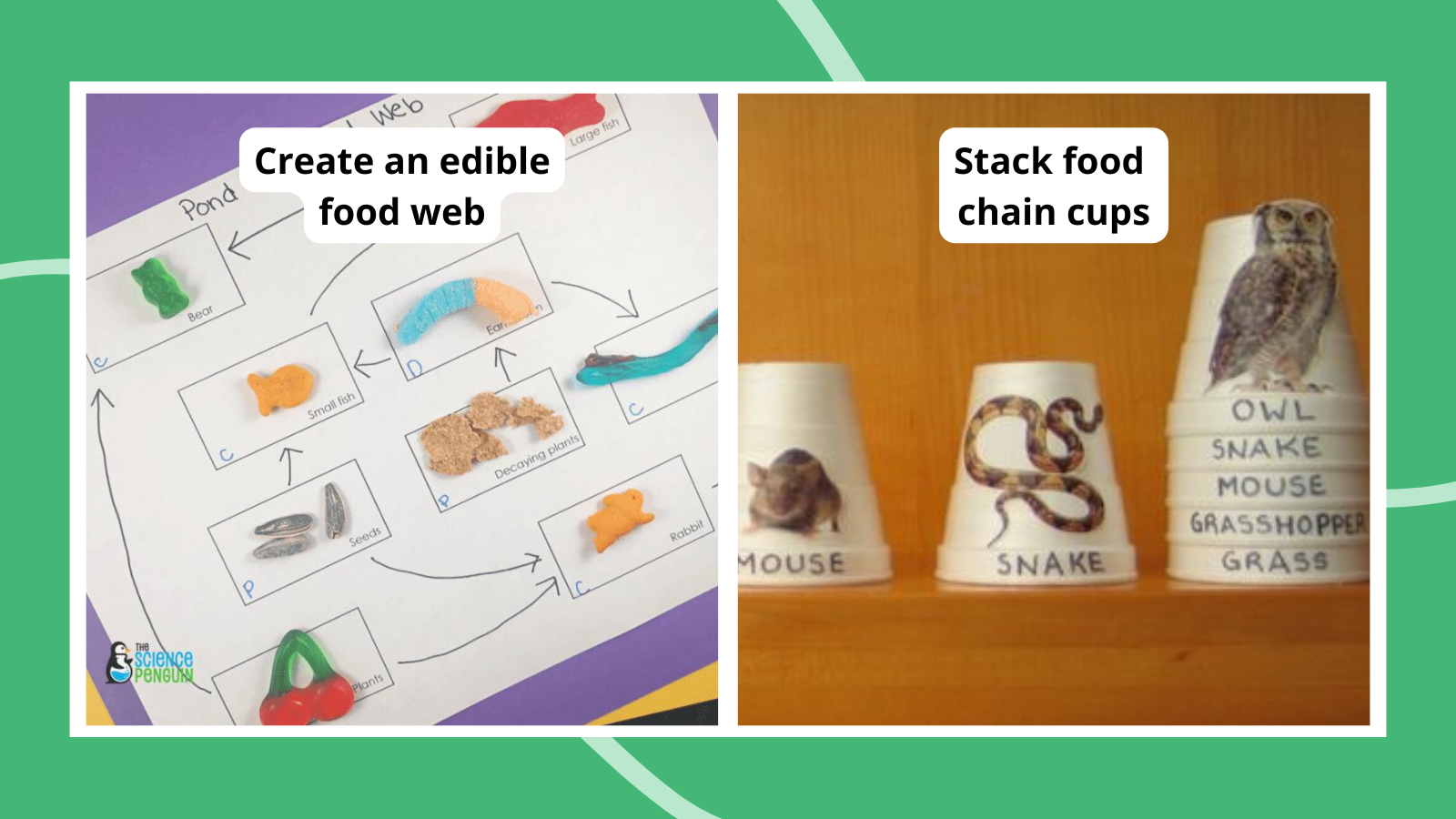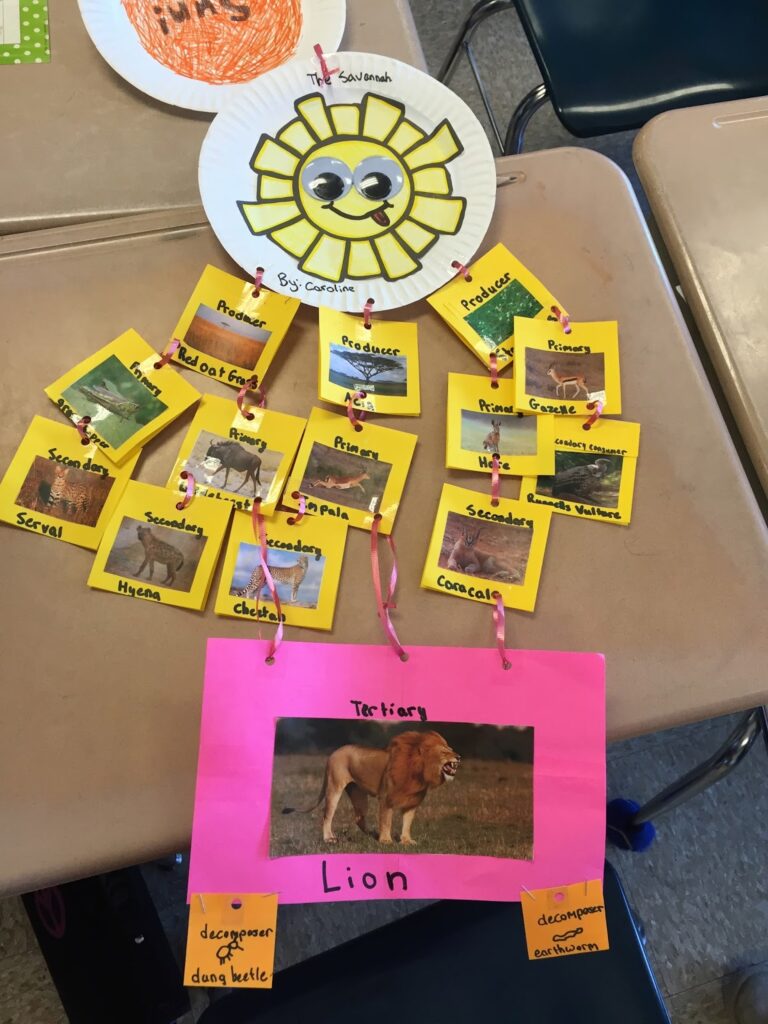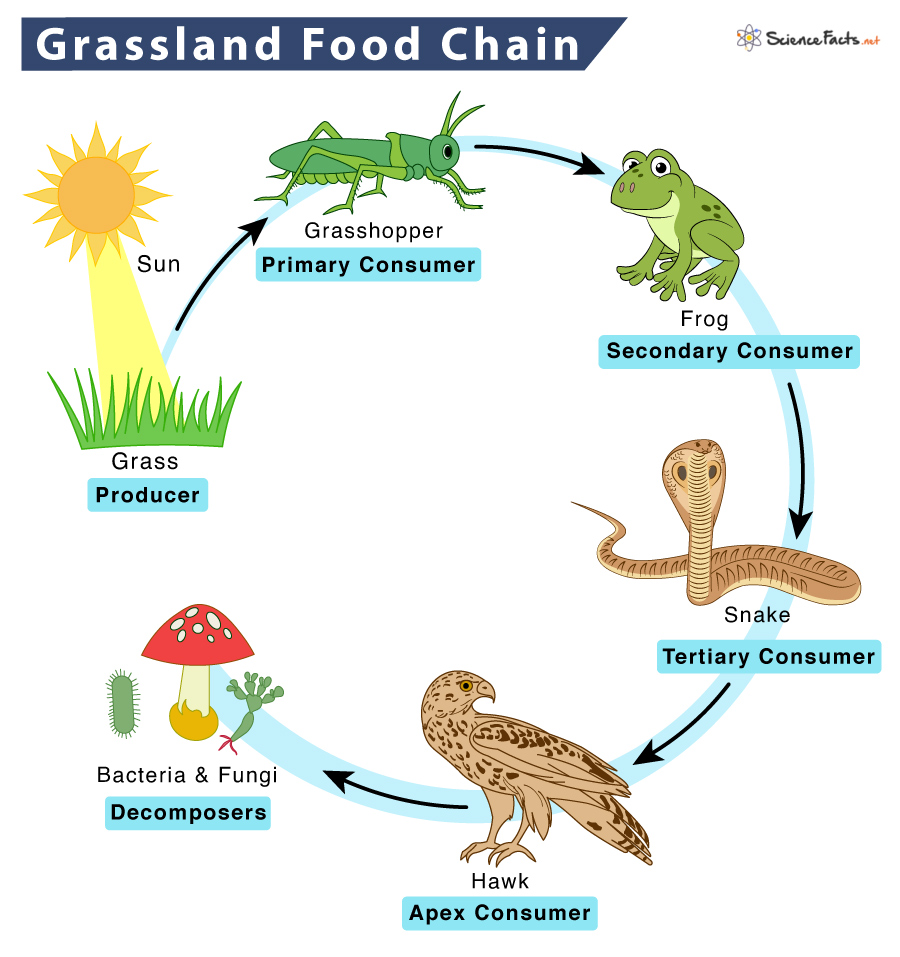How To Make An Food Chain: A Simple Guide For Kids

IntroductionHave you ever wondered how animals and plants depend on each other for food? This is what we call a food chain! A food chain shows us who eats whom in nature. It’s like a roadmap of who gets their energy from who. Food chains are super important because they help keep our ecosystems balanced. If one animal or plant disappears, it can affect the whole chain. So, let’s explore the fascinating world of food chains and learn how they work together to keep our planet healthy. You can also discover more exciting articles about nature and science on Baobei.com.vn!

Components of a Food Chain
A food chain is like a roadmap that shows us how energy flows through living things. It starts with plants, which make their own food from sunlight and air. Then, animals eat the plants, and other animals eat those animals, and so on.
Each step in the food chain is called a trophic level. Producers are at the first trophic level, consumers are at the second and third trophic levels, and top predators are at the highest trophic level.
| Trophic Level | Organisms |
|---|---|
| Producers | Plants |
| Primary Consumers | Herbivores |
| Secondary Consumers | Carnivores that eat herbivores |
| Tertiary Consumers | Carnivores that eat other carnivores |
| Top Predators | Animals with no natural predators |
Producers
Producers are the foundation of the food chain. They make their own food from sunlight and air through a process called photosynthesis. Plants are the most common producers, but there are also some bacteria and algae that can produce their own food.
Producers are very important because they provide the energy that all other living things need to survive.
Consumers
Consumers are animals that cannot make their own food. They must eat other organisms to get the energy they need to survive.
There are two types of consumers: herbivores and carnivores. Herbivores eat plants, while carnivores eat other animals.
Top Predators
Top predators are animals that have no natural predators. They are at the top of the food chain and play an important role in regulating the populations of other animals.
Top predators help to keep the ecosystem in balance. Without them, the populations of other animals would grow too large and could damage the environment.
- Food chains are important because they show us how energy flows through ecosystems.
- Producers are the foundation of the food chain and provide the energy that all other living things need.
- Consumers are animals that cannot make their own food and must eat other organisms to survive.
- Top predators are animals that have no natural predators and play an important role in regulating the populations of other animals.
By understanding food chains, we can better understand how ecosystems work and how to protect them.
How to Make PancakesHow to Boil Eggs

Types of Food Chains
Food chains can be classified into two main types: grazing food chains and detrital food chains.
| Type of Food Chain | Description |
|---|---|
| Grazing Food Chains | Start with producers (plants) and end with top predators (animals that eat other animals). |
| Detrital Food Chains | Start with dead plants and animals and end with decomposers (organisms that break down dead matter). |
Grazing food chains are the most common type of food chain. They start with plants, which are eaten by herbivores (animals that eat plants). Herbivores are then eaten by carnivores (animals that eat other animals). Carnivores may be eaten by other carnivores, and so on. The top predators in a grazing food chain are animals that have no natural predators.
Detrital food chains start with dead plants and animals. These dead organisms are broken down by decomposers, such as bacteria and fungi. The decomposers are then eaten by detritivores (animals that eat dead matter). Detritivores may be eaten by other detritivores, and so on. The top predators in a detrital food chain are animals that have no natural predators.
- Grazing food chains start with plants and end with top predators.
- Detrital food chains start with dead plants and animals and end with decomposers.
- The top predators in a food chain are animals that have no natural predators.
How to Make PancakesHow to Boil Eggs

Importance of Food Chains
Food chains are important because they show us how energy flows through ecosystems. Energy from the sun is used by plants to make food. Animals eat the plants, and other animals eat those animals. This process of energy transfer is called a food chain.
Food chains help to keep ecosystems in balance. If one species in a food chain is removed, it can have a ripple effect on the entire ecosystem. For example, if there are too many deer in an ecosystem, they can eat all of the plants. This can lead to a decrease in the number of rabbits, which are a food source for foxes. The decrease in rabbits can then lead to a decrease in the number of foxes.
Food Chains and Decomposers
Decomposers are organisms that break down dead plants and animals. They play an important role in food chains by recycling nutrients back into the ecosystem. Without decomposers, nutrients would be locked up in dead organisms and would not be available to other organisms.
Decomposers include bacteria, fungi, and insects. They break down dead organisms into smaller pieces, which are then absorbed by plants. Plants use these nutrients to grow and produce food for other organisms.
| Decomposer | What it Breaks Down |
|---|---|
| Bacteria | Dead plants and animals, organic matter |
| Fungi | Dead plants and animals, wood |
| Insects | Dead insects, small animals |
Food Chains and Humans
Humans are part of food chains. We eat plants and animals, and we are eaten by other animals. Our activities can also affect food chains. For example, when we clear forests, we remove the habitat of many animals. This can lead to a decrease in the number of those animals, which can then have a ripple effect on the entire food chain.
- Food chains are important because they show us how energy flows through ecosystems.
- Decomposers play an important role in food chains by recycling nutrients back into the ecosystem.
- Humans are part of food chains, and our activities can affect food chains.
How to Make PancakesHow to Boil Eggs

Conclusion
Food chains are important because they show us how energy flows through ecosystems. They help to keep ecosystems in balance. Humans are part of food chains, and our activities can affect food chains. By understanding food chains, we can better understand how ecosystems work and how to protect them.
| Related Post | Link |
|---|---|
| How to Make Pancakes | https://baobei.com.vn/how-to-make-pancakes-2/ |
| How to Boil Eggs | https://baobei.com.vn/how-to-boil-eggs/ |
Here are some tips for protecting food chains:
- Reduce your consumption of meat and animal products.
- Support sustainable agriculture practices.
- Protect natural habitats.
- Educate others about the importance of food chains.
By following these tips, we can help to protect food chains and ensure a healthy planet for future generations.




